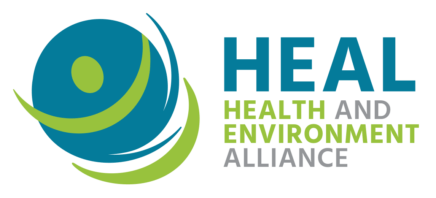The European Commission’s Directorate-General for Internal Market, Industry, Entrepreneurship and SMEs (DG GROW) held a ‘Reality Check Workshop’ on the potential simplification of chemicals legislation. The legislations on the table: Cosmetics Products Regulation and the Regulation on Classification, Labelling and Packaging of chemicals (CLP). The presented proposals are very alarming: allowing carcinogenic substances more readily in cosmetics and personal care products and deleting the planned CLP update to make labelling in products more legible for consumers and workers.
As the revision of EU chemicals legislation REACH is underway, the Health and Environment Alliance urges the European Commission to uphold its commitments on safer chemicals and ensure that ambitious health protections remain at the heart of the project.
“The REACH revision represents a crucial opportunity to better protect Europeans from harmful chemical exposures that impact our daily lives. We cannot continue with a regulatory system that assesses the risks of chemicals in isolation when we know people are exposed to complex mixtures every day. From the chemical cocktails in household products to unregulated polymers and persistent chemicals, the science is clear: our current approach leaves significant gaps in public health protection.
The Commission must resist industry pressure to weaken authorisation processes or add unnecessary procedural hurdles to further delay decisions on most harmful chemicals. This revision needs to deliver the comprehensive chemical safety framework that European citizens deserve and expect.” Dr. Esther Smollich, Senior Science and Policy Officer, Health and Chemicals at HEAL states.
People routinely encounter mixtures of chemicals in everyday life, which can increase harmful health effects. It is high time that REACH risk assessments reflect this reality, rather than assessing the risks of chemicals individually as they currently do. Introducing a mixture allocation factor would adjust acceptable exposure thresholds to account for chemicals cocktails in a straightforward manner. Recent research backs concerns about mixture toxicity; chemical combinations found in personal care products and plastics negatively impact children’s health, and health risks associated with the combined exposures to endocrine-disrupting chemicals are systematically underestimated.
REACH’s current generic risk management approach (which applies to carcinogens, mutagens and reproductive toxicants) should be expanded to include endocrine disruptors and substances that are persistent, bioaccumulative or mobile in the environment (such as PFAS).
Manufacturers should be required to notify and register polymer use, which has previously been exempt from regulations due to polymers’ larger molecular size. However, some polymers are prone to transformation and degradation over time, leading to the formation of mobile transformation products that can be more bioavailable and hazardous than the initial polymers. For example, side-chain fluorinated polymers – a group of polymeric PFAS – are known to release non-polymeric PFAS chemicals during degradation.
HEAL urges against weakening the authorisation process by introducing grace periods after authorisations are refused, or by eliminating the ability to prioritise phase-outs for widely used substances of very high concern. The European Environmental Bureau estimates that in 2022, the overall REACH authorisation process already lasted a median of nine years and three months (six years and two months in the shortest case), giving applicants ample time for substitution.
Finally REACH authorities should not face additional procedural burdens, such as the proposed “regulatory management options analysis” requirement before implementing risk management measures.
Read HEAL’s comments on CARACAL 54 proposals for the targeted revision of REACH here.
——–


